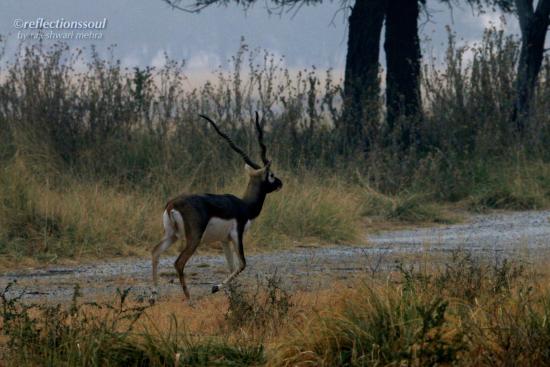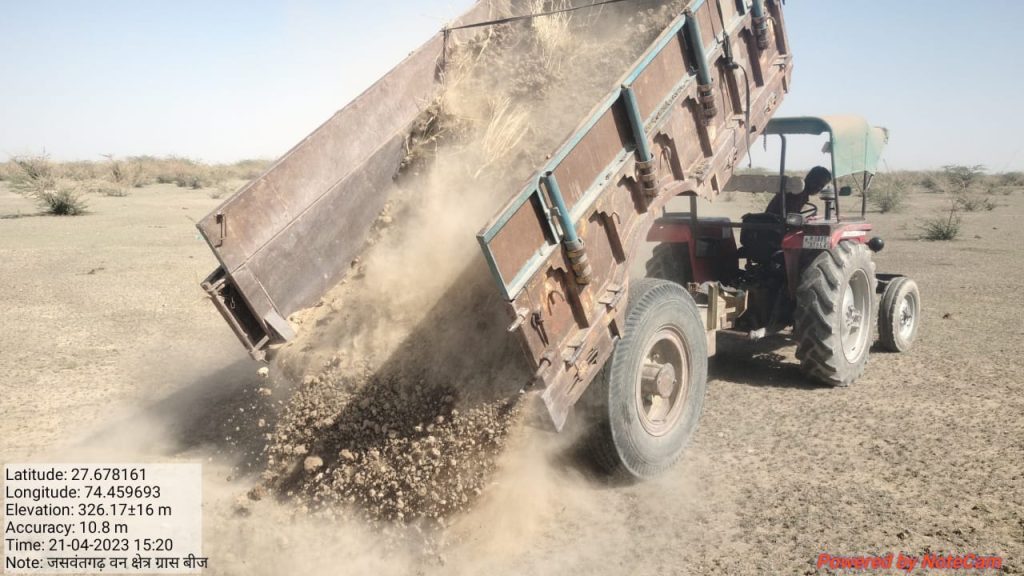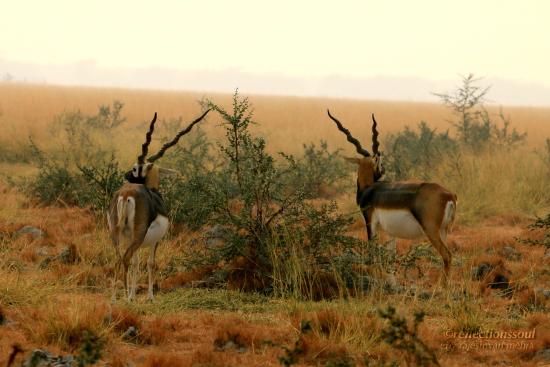In a first-of-its-kind, the Rajasthan Forest Department will be relocating the famous blackbucks from Tal Chhapar Sanctuary to Jaswantgarh forest block in Nagaur district around 10 km away as the native Indian antelope population has reached full capacity in the reserve leading to shortage in grazing grounds.
Located in Churu district, Tal Chhapar Sanctuary, spans about 7.2 sq km with 4,220 blackbucks and over 250 species of birds have been recorded so far with many species of migratory raptors coming from Central Asia every year.
Speaking to Indian Masterminds, Churu DFO Savita Dahiya, IFS, said, “Approximately one hectare area is required for a blackbuck for its fodder and roaming ground.”

Jaswantgarh topped the choice chart because of its close proximity to Chhapar and its low-lying landscape with similar soil condition. “The natural lowland area will have rainwater availability solving the drinking water source for the blackbucks,” the officer explained.
RECHARGING GRASSLAND
One of the key measures that needed attention ahead of relocation was creation of grassland habitats. The blackbucks have fared well even in the face of natural and human-induced challenges, a new study by the Indian Institute of Science (IISc) this year showed.
The males with their corkscrew-shaped horns and black-to-dark brown coats are a sight to behold. They move a lot, while the fawn-coloured females tend to spread out less. The habitat development includes fencing of areas infested by Prosopis juliflora weed that prevents local grasses from growing.
Besides, also removing of juliflora, transporting fresh fertile soil with seeds of grasses from Chhapar and ploughing and planting grass seed pellets. Ms. Dahiya shared that the habitat development is being funded by the Chief Minister’s Fund after a rap by the high court ordering declaration of Tal Chhapar sanctuary as eco-sensitive zone.

The grassland recharge process of the block that has loamy soil rich in calcium but lacking nutrients has to be completed by monsoon. “The soil charged with seeds is being transported. We are making good use of the westerly winds in dispersing the seeds which are expected to start germinating once monsoon hits,” the DFO said.
She further informed that the results will be visible once the weed is removed and productive grassland is saved from grazing stray cattle.
CHALLENGES
Ms. Dahiya said shifting of blackbucks is highly challenging as the animal is extremely sensitive and there are no known cases in India of capturing wild blackbucks and translocating them without mortality. In the 1920s, Maharaja of Bikaner had shifted some blackbucks from Bikaner to Chhapar in his game sanctuary by means of creating a corridor in which these antelopes were fed and given water every day. “Now there exists a road and a railway line that goes through this corridor,” she said.
“Once the grasslands are ready, we will try and test the African technique Boma to relocate the animals. The department has also planned to make a temporary 10-kmcorridor from Tal Chhapar to Jaswantgarh,” Ms. Dahiya mentioned.
The officer concluded by saying that they intended to transform this place from an existing wasteland which is slowly turning into a dumpyard for the nearby cities and village to a beautifully rich biodiverse zone that will attract tourists.

































